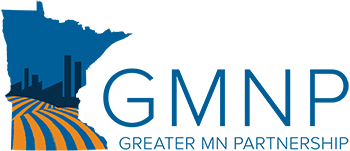OUR 2025 LEGISLATIVE PRIORITIES
Ensure that all Greater Minnesota communities have appropriate broadband.
- Monitor the implementation of federal BEAD funds and key state programs, including the Low Population Density Grant Program, and any related policy changes.
STATE FUNDING FOR BROADBAND
After aggressive advocacy by the GMNP, the Legislature created the Border-to-Border Broadband Development Grant program in 2014. This program provides a 50% match to communities, co-ops, nonprofits or private providers who wish to expand broadband in “unserved” (no broadband service) or “underserved” (poor service) areas. Since its creation, the program has received over $300 million in state funding, including $100 million in 2024-2025.
In the 2023 legislative session, GMNP advocated for programs and changes intended to address gaps in broadband funding, including the pilot Lower Population Density Grant Program to allow the state to match up to 75% of the cost of projects, the creation of the Broadband Line Extension Connection Program, and modification of the existing Border-to-Border Grant Program to increase the maximum award from $5 million to $10 million.
FEDERAL FUNDING FOR BROADBAND
The Federal government is making approximately $65 billion available for broadband nationwide through Broadband Equity, Access and Deployment (BEAD) funding and Digital Equity Funding. Minnesota will receive a formula-based allocation from each program and was required to develop a plan for spending the funds.
Minnesota's BEAD allocation is $651,839,368. The state legislature has directed that all BEAD funds will flow through the existing Border-to-Border program. The federal BEAD program requires that state spending proposals must address the following priorities:
- Service to all unserved locations. Unserved locations are those identified on FCC maps as not having broadband service at speeds of at least 25Mbps download/3Mbps upload from service provided over a wired connection or licensed fixed wireless.
- Service to all underserved locations. Underserved locations are those identified on FCC maps as having broadband services at speeds of at least 25Mbps download/3Mbps upload but less than 100Mbps download/20Mbps upload over a wired or licensed fixed wireless service.
- Gigabit symmetrical service to Community Anchor Institutions.
If a state can demonstrate that it has allocated sufficient funding to achieve all three priorities, then it may use BEAD funding for other projects. Minnesota's Office of Broadband Development estimates that all BEAD funding currently available will be needed to address the first two priorities.
